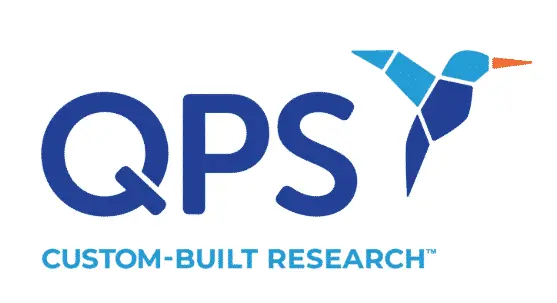Broadly speaking, the term “gene therapy” refers to techniques that seek to treat or prevent disease by modifying, manipulating, or altering the genetic material of a patient’s cells. Gene therapy holds promise for treating conditions ranging from genetic disorders and inherited diseases to certain types of cancers. Types of gene therapy vary depending on the specific disease and therapeutic goal.
Exploring the Many Types of Gene Therapy
Techniques used in the various types of gene therapy include inactivating disease-causing genes, replacing disease-causing genes with healthy genes, and introducing new or modified genes to fight against the disease. Below we explore some specific techniques and their methods of action.
Viruses Offsetting Absent Gene Products
This approach uses modified viruses to deliver functional copies of missing or defective genes to a patient’s cells. These virus variants are able to efficiently deliver genetic material but are modified to remove their ability to trigger disease.
In this approach, a therapeutic virus variant is engineered to carry a good copy of a defective gene. Upon infection and integration of stable maintenance, the patient is able to gain function even as the inherited defective gene copies remain.
OVs: Viruses Killing Cancer Cells
Oncolytic viruses (OVs) are viruses that have evolved or been genetically engineered to selectively infect and kill cancer cells while sparing healthy cells.
Some viruses prefer to replicate in dividing cells — like cancer cells. OVs fall under this category. OVs selectively target and enter cancer cells, replicate inside of them, and induce cell death. OVs can also stimulate the immune system to mount an anti-tumor immune response.
Large RNA Therapeutics for Gene Defects
This approach introduces full-length mRNA molecules to treat inherited genetic defects or disorders (such as cystic fibrosis or sickle cell anemia) caused by mutations in specific genes.
In this technique, mRNA are engineered to carry genetic instructions to cells, bypassing defective genes. The introduction of functional full-length mRNA into the cells allows them to compensate for the missing or defective gene’s role, restoring proper cellular function.
Large RNA Vaccines
This gene therapy technique uses RNA molecules to stimulate an immune response against specific pathogens, using exogenous nucleic acid delivery to support population health through vaccination.
Large RNA vaccines work by introducing synthetic RNA strands encoding specific viral or bacterial antigens into the body. Once these RNA are taken up by cells, they trigger antibody production. The Moderna and Pfizer COVID-19 vaccines are examples that fall under this category. Large RNA vaccines are short-term, indirect, and transitory, as exogenous protein expression is needed for only a short term to induce the necessary immune response.
siRNAs Modulating Disease State RNA Levels
Small interfering RNAs (siRNAs) are short RNA molecules that can specifically target and silence the expression of specific genes or disease-causing RNA molecules.
siRNAs are coded to match the mRNA of a protein over-expressed in the disease state. The targeted mRNA will then be selectively destroyed, the protein product level will drop, and the subsequent biologic changes alleviate the disease state. As siRNA is labile, this technique requires long-term treatment.
CRISPR Editing of Errors in Mutant Genes
Clustered Regularly Interspaced Short Palindromic Repeats (CRISPR) editing is a revolutionary gene therapy approach that allows for precise, site-specific modifications to be made in the DNA of living cells. In the context of gene therapy, CRISPR can be used to correct errors or mutations in specific genes associated with genetic disorders.
A CRISPR complex can be designed and built to engineer almost any short sequence modification, including the chromosomal sites in a host cell with a catastrophic gene defect. The CRISPR complex is then delivered by virus or nanoparticle into living cells.
CAR-T Modified Host Cells as a Cancer Therapy
Chimeric Antigen Receptor T-cell (CAR-T) therapy is a type of gene therapy that involves modifying a patient’s own immune cells (specifically T-cells) to enhance their ability to recognize and kill certain types of cancer cells.
In the CAR-T method, T-cells extracted from the patient’s blood are genetically engineered to express a chimeric antigen receptor (CAR) on their surface, which is designed to recognize cancer cell antigens. The genetically modified CAR-T cells are infused back into the patient’s body, where they induce cancer cell death and trigger anti-tumor response activation.
_____
Whether your focus is small molecules, protein biotherapeutics, vaccines, or gene therapy, QPS provides a full range of preclinical and clinical research solutions to support all stages of drug development.
QPS is a GLP/GCP-compliant CRO delivering the highest grade of discovery, preclinical, and clinical drug development services. Since 1995, it has rapidly expanded from a bioanalysis shop to a full-service CRO with 1,100+ employees in the US, Europe, India, and Asia. Today, QPS offers expanded pharmaceutical contract R&D services with special expertise in neuropharmacology, DMPK, toxicology, bioanalysis, translational medicine, and all phases of clinical development. QPS has CLIA-certified and GLP-compliant laboratories ready to fast-track gene therapy, RT-qPCR/QPCR, serological assays, and vaccine development programs. An award-winning leader focused on bioanalysis and clinical trials, QPS is known for proven quality standards, technical expertise, a flexible approach to research, client satisfaction, and turnkey laboratories and facilities. For more information, visit www.qps.com or email info@qps.com.








